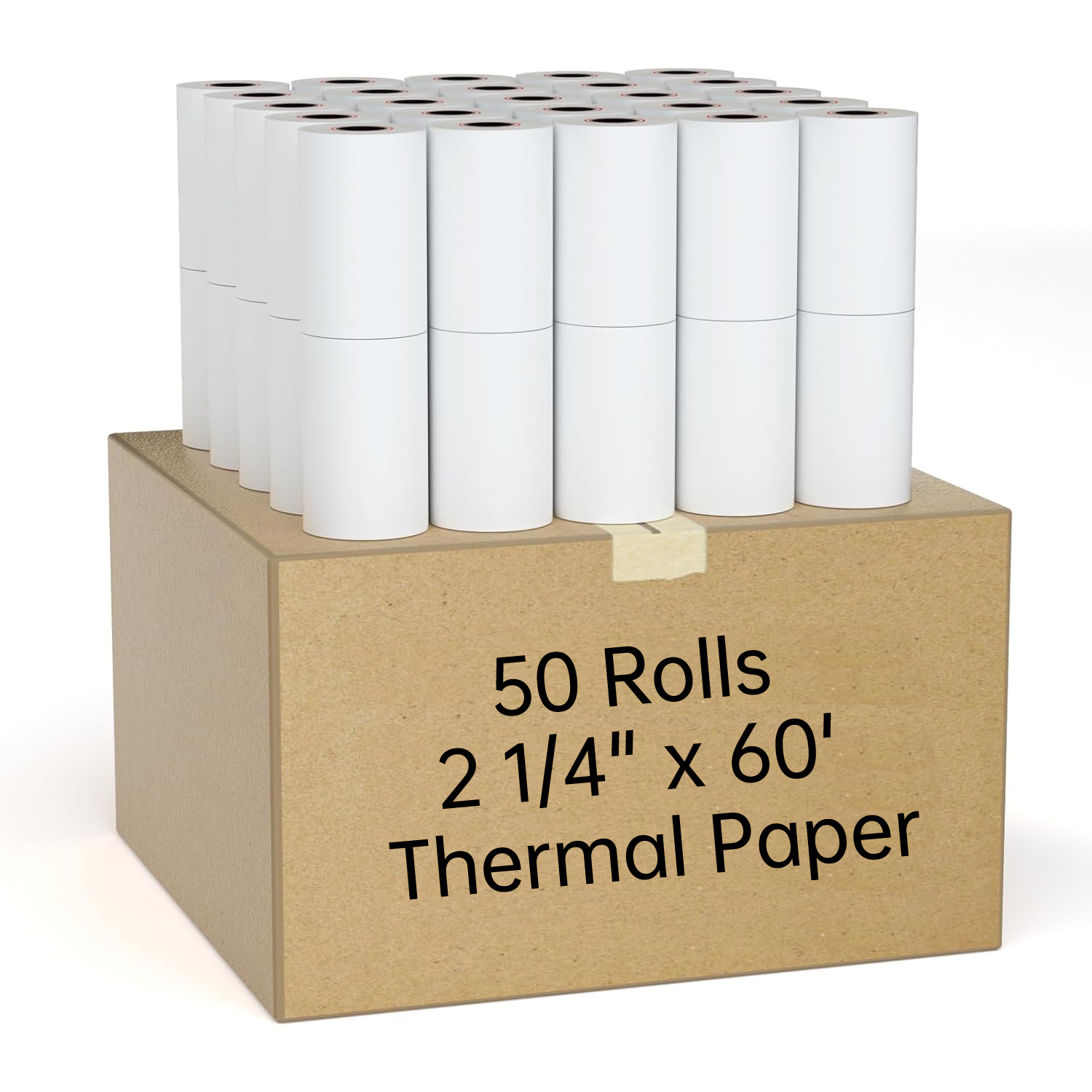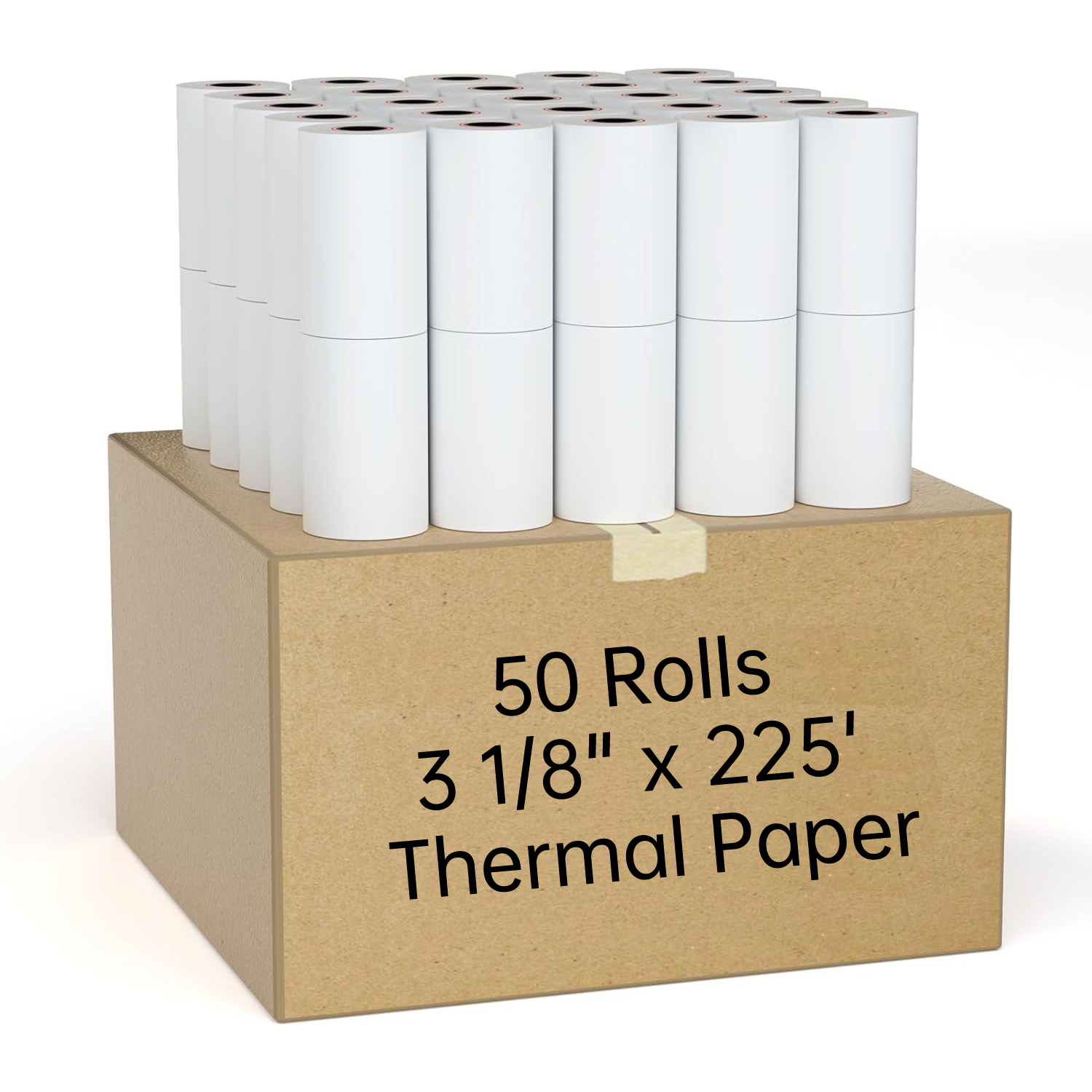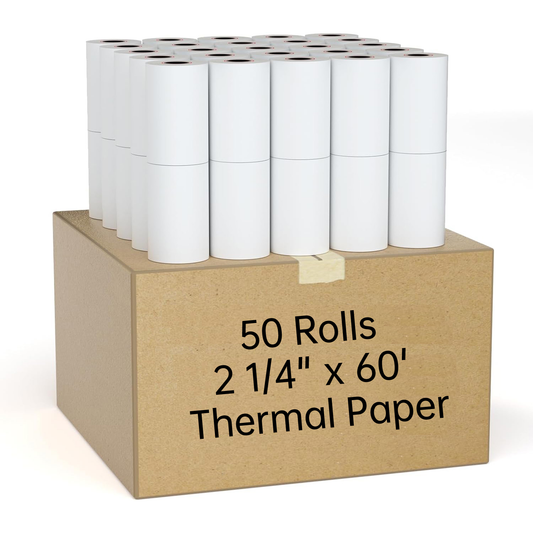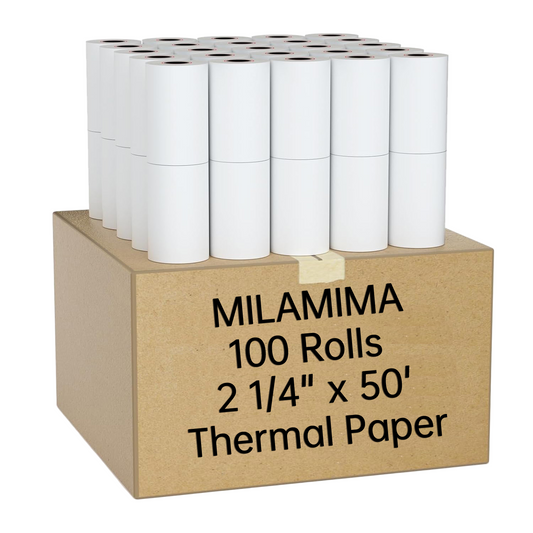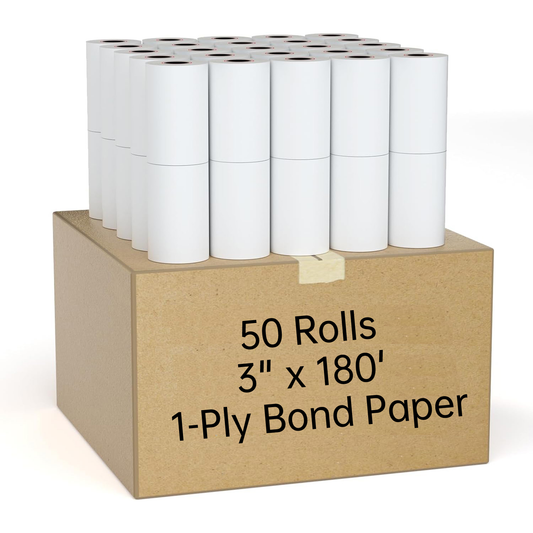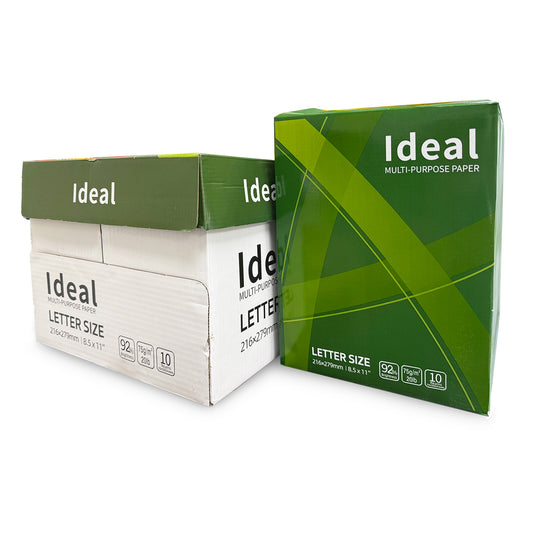What Are the Disadvantages of Thermal Paper?
Thermal paper is widely used in point-of-sale (POS) systems, credit card terminals, cash registers, and portable printers. While it offers fast, ink-free printing, it's not without its downsides. In this article, we’ll explore the disadvantages of thermal paper and how they might affect your business—especially if you rely heavily on printed receipts or transaction records.
1. Fading Issues Due to Heat and Light
One of the most significant disadvantages of thermal paper is its tendency to fade over time. Since the paper relies on a heat-sensitive chemical coating to display text or images, exposure to sunlight, heat, or friction can cause the printed content to become unreadable.
For example, a receipt left in a hot car or stored near a window might turn completely black or fade beyond recognition. This can be especially problematic for businesses that require proof of purchase for returns, accounting, or audits.
2. Chemical Coating and Health Concerns
Thermal paper is often coated with Bisphenol A (BPA) or Bisphenol S (BPS)—chemicals linked to health risks such as hormone disruption. Although BPA-free options are now available, not all thermal paper is free from harmful compounds.
Frequent handling of thermal receipts can transfer these chemicals to the skin, potentially raising concerns for cashiers, customers, and anyone dealing with receipts daily. Businesses in Canada and elsewhere are increasingly switching to BPA-free thermal paper to promote health and safety compliance.
3. Environmental Impact
Unlike standard paper, thermal paper is not recyclable in most cases due to its chemical coating. This makes it environmentally unfriendly and contributes to landfill waste. Furthermore, improper disposal can result in the release of harmful chemicals into the ecosystem.
Businesses aiming for sustainability in Canada and North America are encouraged to explore alternatives, such as BPA-free, recyclable options or digital receipts.
4. Storage Limitations
Thermal paper receipts and records require specific storage conditions. They must be kept in cool, dark places to prevent fading or chemical degradation. If exposed to high humidity or temperatures above 77°F (25°C), the legibility of the paper may degrade significantly.
For long-term documentation, thermal paper is not ideal unless copied or scanned immediately after printing. Businesses with audit or compliance requirements should consider these limitations.
5. Cost Considerations
Although thermal printers do not require ink, the paper itself can be more expensive than regular bond or plain paper. BPA-free and premium thermal paper can further increase costs. Over time, this might impact a business’s budget, especially if large volumes of receipts are printed daily.
6. Incompatibility with Some Printers
Thermal paper is specifically designed for thermal printers. If a business switches or upgrades to an inkjet or laser printer, leftover thermal paper becomes unusable. This could lead to unnecessary waste and added replacement costs.
7. Regulatory and Consumer Preference Shifts
As environmental awareness grows, some consumers are demanding eco-friendly receipts or opting for digital alternatives. Several Canadian provinces have introduced guidelines encouraging BPA-free and recyclable thermal paper usage. Businesses not keeping up with these changes risk reputational harm.
8. Color Limitations
Thermal printers are usually limited to monochrome output. If your business requires color printing for branding, logos, or highlighted sections, thermal paper won’t meet your needs. This can be a dealbreaker for retail or food service establishments that value branding in their printed materials.
Tips to Overcome Thermal Paper Limitations
- Choose BPA-free or BPS-free thermal paper to reduce health risks.
- Store thermal paper receipts in cool, dark environments.
- Offer digital receipt options for customers who prefer sustainable solutions.
- Scan or copy thermal receipts for long-term recordkeeping.
- Purchase from trusted Canadian suppliers that prioritize quality and compliance.
Buy Safer, High-Quality Thermal Paper in Canada
If you’re concerned about the drawbacks of thermal paper but still require it for daily operations, choose a trusted Canadian supplier. At MilaMima, we provide BPA-free thermal paper rolls in various sizes including 2 1/4" x 150’, 3 1/8" x 225’, and more. Our products are compliant with Canadian safety standards and shipped locally for faster delivery.
Shop our full selection of thermal receipt paper and make a smarter choice for your business today.
Conclusion: Make Informed Thermal Paper Decisions
Despite its convenience, thermal paper has several notable disadvantages—ranging from chemical exposure and fading to environmental concerns. By understanding these drawbacks and taking the right precautions, you can make better purchasing decisions that benefit your customers, employees, and the environment.
Looking for alternatives or eco-friendly thermal paper in Canada? Visit MilaMima today and explore cost-effective, sustainable receipt paper options.


